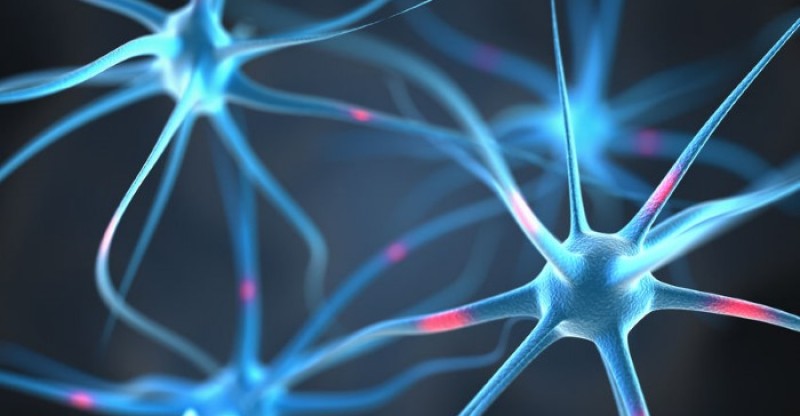How to Reduce Your Chances of Developing Alzheimer’s
Named for Dr. Aloysius “Alois” Alzheimer, a German psychiatrist and neuropathologist, Alzheimer’s Disease was originally termed in 1906 as “presenile dementia.”
Over the years, advancements in research technology and funding have brought about breakthrough after breakthrough in understanding exactly what causes the disease and, potentially, how to treat and cure it.
Many people find themselves asking, though, “Can I do anything to lower my risk of developing Alzheimer’s?”
Research says yes.
What is Alzheimer’s?
Many hear the word “Alzheimer’s” and think “memory loss,” and indeed, that is a substantial effect of Alzheimer’s; but on a more foundational level, Alzheimer’s is a result of the rapid damage and death of brain cells.
To understand exactly what this means, let’s take a step back and begin on a microscopic level with neurons.
Neurons are critical cells which send, process, and receive messages via chemical and electrical signals in the body.
Vital to the proper functioning of the human body, neurons speak to one another by sending these signals through “synapses,” special neural pathways.
A conglomeration of neurons and synapses is called a neural network, and these play an important role in the spinal cord, brain, and nervous system.
With Alzheimer’s, as brain cells (neurons) die off, so do the communication pathways via which they send and receive messages.
As more and more surviving cells are unable to connect, send messages, and properly function, the brain literally begins to shrink.
How these brain cells are affected is constantly being researched and studied, but scientists have narrowed down a few key culprits:
- Amyloid Plaques
In studying the brains of people with Alzheimer’s, doctors and scientists have found what they call “plaques” built up all over the brain’s gray matter, starving critical cells and destroying neural pathways.
Most of the brain’s neuronal cell bodies are contained in the gray matter; the gray matter portion of the brain controls muscle movement, memory, emotions, sensory perception, speech, self-control, and decision-making.
These plaques are made up of clumps of the beta-amyloid protein peptides, and in aggregate, these peptides are believed to be neurotoxic.
A 2013 study from Stanford University found that beta-amyloid didn’t even need to be formally deposited as cerebral plaques to cause trouble.
Simply by binding with existing beta-amyloid receptors, the peptides weaken synapses’ structural integrity and can eliminate them altogether.
With synaptic destruction go memories, self-control, and even the ability to move one’s own muscles.
- Neurofibrillary Tangles
In addition to plaque building up and beta-amyloid bonding, Alzheimer’s researchers have found another brain anomaly which involves tangles of a protein called “tau” in the brain cells of people with Alzheimer’s.
Tau proteins are found mostly in neurons, and are responsible for transporting nutrients and materials, and helping stabilize the structure of the cell.
When tau collapses into twisted strands, referred to as neurofibrillary tangles, cells are no longer able to receive vital nutrients and supplies, so they disintegrate and die.
Neurofibrillary tangles can be found in other diseases like Parkinson’s, but are a primary marker of Alzheimer’s.
A 2011 study discussed at the National Institute of Aging found that like the domino effect, tau pathology can spread from neuron to neuron, which means tangled proteins in one portion of the brain can cause proteins in another portion of the brain to become tangled as well.
Who Gets Alzheimer’s?
There is a good chance you know someone with Alzheimer’s.
Its prevalence, particularly in the senior demographic, means many people help provide care for someone with Alzheimer’s or know of someone who has it.
Quick Alzheimer’s statistics from Alzheimer’s Association include:
- More than 5 million Americans currently live with Alzheimer’s, and that number is expected to grow to 16 million in the next 25 years; most sufferers are over the age of 65.
- Approximately 200,000 Americans under 65 live with early-onset Alzheimer’s.
- An estimated ⅓ of all Americans over 85 have Alzheimer’s.
- Women develop Alzheimer’s more frequently than men; almost ⅔ of people with Alzheimer’s in America are women.
- 1 in 10 Americans over the age of 65 will develop Alzheimer’s, with your risk doubling every five years you live after that.
- Alzheimer’s is the 6th leading cause of death in the United States.
- Alzheimer’s deaths have increased by 89% since the year 2000.
- African-Americans and Hispanics have a higher likelihood of developing Alzheimer’s or other dementia compared to whites.
- Your likelihood of developing Alzheimer’s does increase if someone in your family has the disease and if you inherit the risk gene, APOE-e4, from both parents.
It is important to note that dementia is not specifically Alzheimer’s.
Also known as the major neurocognitive disorder, “dementia” encapsulates a more widespread chronic disorder of mental processes which results from a condition, like Alzheimer’s.
What are the Signs of Alzheimer’s?
Alzheimer’s is a degenerative disease which worsens over time, so the warning signs and clues vary from mild (beginning stages) to severe (late stages).
As the brain begins to lose neurons and synapses are destroyed, abilities which once seemed commonplace now become more and more difficult to carry out, and the learning and memory center of the brain starts to fade.
Early Stage Signs
- Short-term forgetfulness of words, language, and things you have recently seen or read
- Trouble organizing and making decisions
- Repeating yourself or asking the same question over and over
- Beginning to isolate yourself socially from others
Moderate Stage Signs
- Difficulty recognizing family and friends
- Increased memory loss
- Confusion and disorientation
- Impaired reasoning and decision-making
- Misplacing and losing things
- Losing track of the process, and trouble making plans
- Requiring help getting dressed and carrying out basic day to day tasks
- Lack of concern for cleanliness or appearance
Late Stage Signs
- Almost total memory loss – forgetting names, mistaking people for others, etc.
- Growing inactivity and sleeping more
- Rapid mood swings fraught with fear and paranoia
- Delusions of where and when you exist
- Sundowning and agitation; frustration
- Basic abilities are diminished, and you will need assistance eating, drinking, toileting, etc.
How to Reduce Risk of Developing Alzheimer’s
No lifestyle choice, diet, medicine, supplement, or fitness regimen is proven to prevent Alzheimer’s disease 100%.
There exist, however, important and proactive steps you can take to strengthen your body and brain health that may make a difference down the line.
Diet
As with many other diseases including diabetes, heart disease, and cancer, a diet that ditches processed, fatty, sugary foods for the whole, healthy ones is always a good idea.
Whole grains, fruits, vegetables, lean meats, and healthy fats both promote a healthy weight and bone and muscle strength and also deliver vital nutrients to the brain which boosts its capacity to function and transmit information.
Even though your brain technically finishes developing in your mid-20s, it continues to learn and store new information and to restructure and reorganize to form newer, stronger communication pathways between cells.
Deep inside your body’s cells are powerhouse structures called mitochondria which help cells convert what you eat into energy, regulate neurotransmitters, and fight oxidative stress.
Foods which support brain health and may help prevent Alzheimer’s are going to strengthen synapses and stimulate mitochondrial production.
- Antioxidants
Blueberries, dark leafy greens like kale and spinach, avocado, red grapes, and dark chocolate are just a handful of foods with potent amounts of antioxidants, like flavonoids, which help combat oxidative stress that damages brain cells.
A 2012 study out of Brigham and Women’s Hospital found that older women who consumed berries high in flavonoid antioxidants, such as blueberries and strawberries, could postpone potential memory decline by 2.5 years.
- Omega-3 fatty acids
Omega-3 fatty acids, which include alpha-linolenic acid (ALA), eicosapentaenoic acid (EPA), and docosahexaenoic acid (DHA), are believed to support brain health as well.
They can be taken as supplements and are also found in foods like salmon, chia seeds, flaxseed oil, walnuts, mackerel, hemp seeds, and herring.
A 2017 study revealed positive signs of what looked like DHA specifically having a remedial effect on neurodegeneration associated with Alzheimer’s Disease.
Exercise
The seeming saving grace of aging used to be that doctors recommended you “take it easy” and didn’t “exert yourself.”
This once widely-accepted order has been turned on its head in recent decades, however, like exercise and physical fitness have been proven to combat everything from heart disease to arthritis, in addition to Alzheimer’s disease and other cognitive declines.
How exactly does exercise boost your overall health and ability to combat illness and disease?
A large part of if its efficacy is found in the fact that exercise, even low-impact physical activity like hiking and mowing the lawn, boosts your heart which gets more blood pumping throughout your body, circulating vital nutrients and oxygen to key organs, the brain, muscles, and more.
A 2015 report from the Journal of Neurology shared that aerobic exercise protects the brain, helps combat cellular damage, improves cognitive function, and stimulates the growth of new neurons and synapses in the brain.
Doctors recommend adults get up to 150 minutes of exercise a week (kids even more), specifically exercise which gets the heart pumping, like:
- Cycling
- Rowing
- Swimming
- Hiking
- Taking brisk walks
- Dancing
- Tennis
Other beneficial practices that build bone mass and strengthen muscles like weight lifting and yoga also hone coordination and balance skills, which are especially crucial for older adults.
Flexibility, coordination, and balance which prevent a fall can help an older adult save themselves from potential brain trauma or other injuries that are known to expedite cognitive decline.
Social Interaction
Ever heard the saying, “If you don’t use it, you lose it”?
When it comes to combating cognitive decline, this seems particularly applicable to language.
Interacting with others through one on one conversation can help older adults retain word and language skills, strengthening the neurons and synapses in those specific parts of the brain, and preventing degeneration associated with Alzheimer’s Disease.
Watching television or listening to audiobooks or podcasts, for example, is not the same as having a conversation.
A conversation with another person requires listening, processing, critically thinking, planning out a response, and cueing your own verbal interaction.
Social engagement also helps combat feelings of stress, isolation, anxiety, and depression, all of which can drive unhealthy behaviors like limiting activity and eating a poor diet.
Brain vitality spikes when adults engage together, in part because of the chemical reactions which take place including the release of feel-good hormones like dopamine and endorphins.
It is believed that a boost in cognitive stimulation from social engagement also helps replenish cognitive reserves, and reinforces the brain’s ability to adapt and compensate for some disruption or damage.
Social interaction is intellectually stimulating, and as one 2009 report found, “a higher level of social engagement in old age is associated with a better cognitive function.”
Older adults may find getting out and interacting with others to be more difficult than it once was, but these fun and creative ideas for staying active with others may help:
- Volunteer in your community or with your faith group
- Tutor, give lessons or become a mentor
- Join a club or social group, i.e. Gardening Club, Bridge Club, etc.
- Travel and get to know new people and places
- Join a gym or take fitness classes at the local senior center or YMCA
- Stay active in the workplace
Managing Chronic Illness
Connections between increased risk of developing Alzheimer’s and existing chronic illnesses like vascular disease, high blood pressure, heart disease, and type 2 diabetes continue to be researched.
Not only does chronic disease potentially limit your activity and exercise levels, but it can, in certain cases, constrict blood flow to the brain, place added strain and stress on internal organs and arteries, as well as cause its own cognitive impairment and disorientation.
A 2006 report from the Journal of Internal Medicine found a growing body of evidence that supports a strong cause and effect relationship between cardiovascular disease (and its risk factors like high cholesterol) and Alzheimer’s disease.
Taking steps in understanding blood pressure, self-monitoring, and adjusting lifestyle and diet may help a patient with hypertension not only lower their blood pressure and reduce their risk of heart disease, stroke, and heart attack but also help prevent them from developing Alzheimer’s.
The National Council on Aging shares that roughly 92% of older adults have at least one chronic disease, and 77% have at least 2 – these include heart disease, cancer, stroke, and diabetes.
This shocking statistic is why so many scientists and medical professionals are seeking out clearer connections between chronic disease and Alzheimer’s in the hopes of finding remedial interventions that can help decrease those numbers.
What Else?
In addition to diet, exercise, and managing chronic illness, preventing Alzheimer’s may be a matter of simply caring for your brain through sleep.
Regular, quality sleep is believed to provide a window of sustained rest in which the brain goes about cleaning out the day’s toxins and repairing damaged cells.
A 2009 study showed that amyloid plaques associated with Alzheimer’s were more likely to build upon the brains of rats who, you guessed it, were sleep-deprived.
Tips for getting to bed on time and sleeping well each night include:
- Avoid blue light (from technological devices and compact fluorescent light bulbs) up to 2 hours prior to falling asleep.
- Sleep on a comfortable mattress that supports proper spine alignment.
- Avoid caffeine and high-sugar foods and beverages in the evening.
- Stick to a schedule for going to bed and waking at the same time each day.
- Exercise daily to exert energy and help make yourself more tired.
- Use a sleep app to track your circadian rhythm and sleep cycle.
- Avoid naps in the afternoon and evening.
- Find a night-time ritual like practicing yoga, rubbing your feet, or reading, which helps cue your brain for sleep.
Alzheimer’s is an insidious disease which robs people and their loved ones of a future.
While millions and millions of dollars’ worth of research has brought the world closer to understanding why and how Alzheimer’s happens, there, unfortunately, is currently no cure.
Taking proactive steps regarding what you eat, how you care for yourself, and how active you choose to be, does, however, seem to make a difference in lowering your risk of developing Alzheimer’s.
FDA Compliance
The information on this website has not been evaluated by the Food & Drug Administration or any other medical body. We do not aim to diagnose, treat, cure or prevent any illness or disease. Information is shared for educational purposes only. You must consult your doctor before acting on any content on this website, especially if you are pregnant, nursing, taking medication, or have a medical condition.
HOW WOULD YOU RATE THIS ARTICLE?






